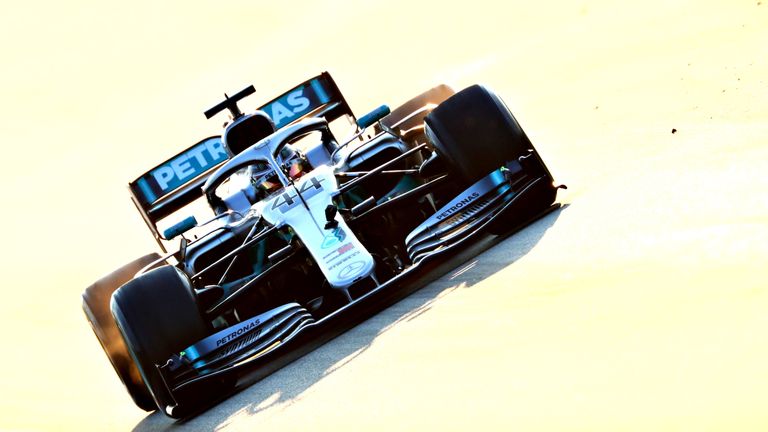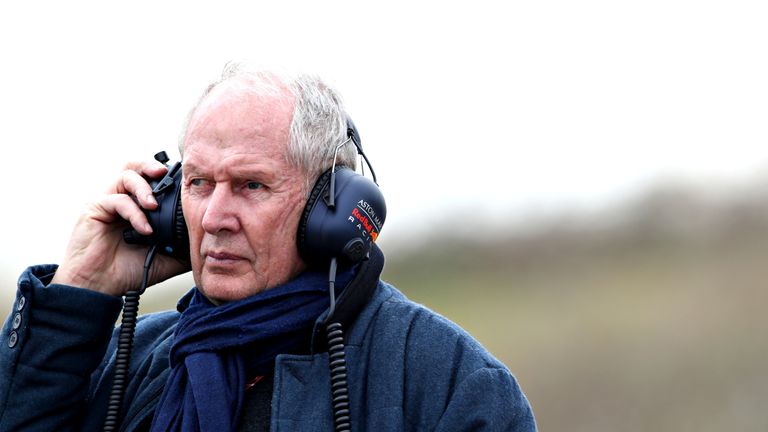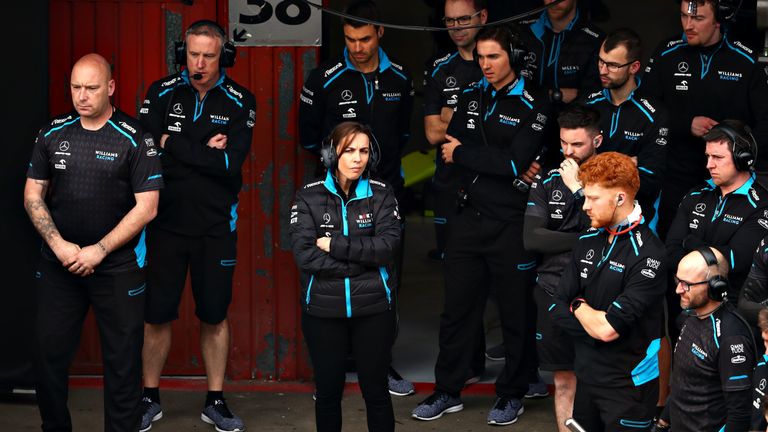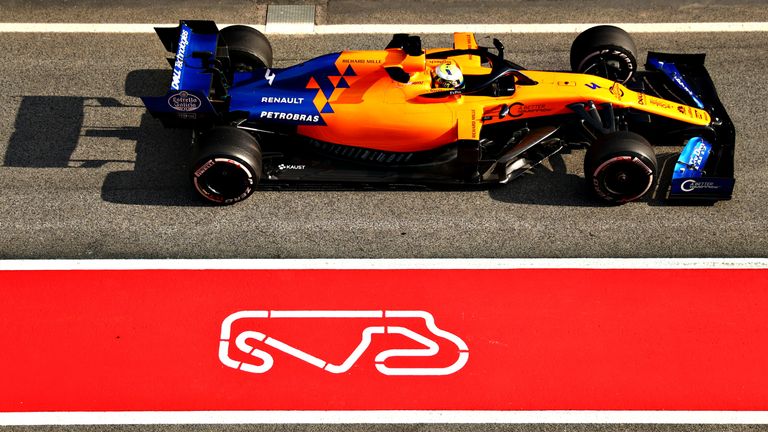F1 2019 Testing: What we learnt at Test One
Reviewing an intriguing four days of action at Barcelona...
Monday 25 February 2019 14:04, UK
Ferrari make an early move
No matter how hard teams try to caution against reading too much into testing lap times, it never takes long for the analysis of lap times to start. It is a dangerous game - week one pacesetters Renault, it's fair to say, haven't suddenly developed F1's fastest car - but on this occasion it didn't take long for a paddock consensus to emerge about who might be 2019's early front-runners.
As early as Day One, Mercedes boss Toto Wolff described Ferrari's start as "ultra strong", with Lewis Hamilton adding 48 hours later that their Italian rivals indeed looked "very, very strong".
On Day Four it was the turn of Red Bull's Helmut Marko. "Ferrari are at the moment the fastest car and then it's Red Bull and Mercedes," Helmut told Sky Sports News. An hour later, Valtteri Bottas concurred: "At this point they're a bit ahead."
Analysing the plethora of lap times, Sky F1's Mark Hughes said: "The order looks quite clear. It looks like Ferrari have got maybe four or five tenths over the rest. But when we say they are four tenths ahead it's with the caveat that we do not know the fuel they are running…"
And that, as ever, remains the big testing catch.
What is more quantifiable is what we know and have heard about the new Ferrari. The SF90 ran the second-most amount of laps across the first four days, with the car suffering no obvious technical problems. Both Sebastian Vettel and Charles Leclerc have delivered positive impressions about the car's handling and performance, with their long runs catching the eye.
Yet there's always an element of brinkmanship and, in the words of Leclerc, "sandbagging" that goes on at this time of the year.
"They are probably not pushing and we are not either," said the Monegasque.
So far, so optimistically good, for Ferrari. But much can change in the 25 days before the class of 2019's cars hit the track for Practice One in Melbourne. Starting with Test Two, which starts on Tuesday.
Should Mercedes be concerned?
Even if they have come away from the first test with an early gap to address, a title-winning machine such as Mercedes is unlikely to be too perturbed this soon into a new F1 year.
"There is definitely a lot of potential, but it's not yet quite there," said Bottas of the W10. "I feel a bit of excitement in the team to discover more about the car and really try to improve it as it doesn't look like we're miles ahead of everyone. I think it motivates us."
It wasn't until Day Four that Mercedes unleashed a little more of the car's pace to conduct performance runs but, tyre-corrected, they were not as quick as those Ferrari and Red Bull managed. Still, the 2019 Mercedes appeared just as bullet-proof as its title-winning predecessors and they already have full race simulations in the bag.
Hamilton and Bottas admitted there was plenty still to understand, but stressed there was a lot more in the pipeline too.
"We don't think anyone is going with this type of car to the first race, including us," said Bottas. "We do have new parts coming for the first race. But we can't really rely on that, even with this spec of car we still need to make it better and quicker."
A smooth start for Red Bull-Honda
Christian Horner was in danger of sounding like McLaren's Ron Dennis at the start an ill-fated Honda link-up when he professed that Red Bull's new engine's integration into the chassis was a "a thing of beauty" - but this partnership has hit the ground running in Barcelona.
Red Bull have been quietly fast - Sky F1's Mark Hughes believes they are at least on par with Mercedes, sand-bagging or not - while they haven't had any reliability issues of note.
"The engine is reliable and I can say we would never have had such a good preparation for the season," proclaimed Marko. "It's a very good relationship. The concern was reliability but so far it's not a problem at all."
Red Bull couldn't have hoped for much more.
Are the midfield closing the gap?
Winter testing or not, it's a surprise to finish the first week with a Renault on top and two Toro Rossos and an Alfa Romeo just behind on the fastest lap charts.
While that top four is surely not indicative of the likely pecking order once we get to Melbourne, it does at least highlight that all three of those teams have improved and developed impressive chassis over the break. The Circuit de Catalunya can be rather unforgiving for cars lacking downforce.
It also seems to suggest that Renault have made progress with their engine over the winter - new star recruit Daniel Ricciardo, a driver who knows a thing or two about under-powered and unreliable French engines, was suitably impressed - and the pack are getting stronger this year.
Both Alfa Romeo and Toro Rosso have been struggling towards the back of the grid at some point in recent seasons, but after their strong start to 2019, Racing Point's Sergio Perez admitted: "There are no slow teams anymore. Every team can be a surprise now."
Racing Point are one team who might have expected to be higher up the timesheets after Test One, along with Haas, the surprise package from 2018 who suffered more reliability failures than anyone this week.
But neither had a tougher week than Williams.
If the rest of the midfield are improving, Williams are in trouble. Their two-and-a-half-day FW42 delay limited George Russell and Robert Kubica to three 'shakedown' sessions, and Williams won't be stepping up their programme with aerodynamic work until next week.
McLaren are making strides
McLaren have made it clear that they are turning over the page from their previous era this year, moving away from setting unlikely targets for the season and towards a "new chapter", braced for a "long road ahead".
On the track, this was a positive start. Lando Norris and Carlos Sainz both settled into the midfield in terms of their fastest laps, and the majority of their best work was done during the slower opening two days.
"We could be in a good place for the rest of the season," said Sainz.
McLaren have had their backs against the wall upon arriving in Spain in each of the four previous winter tests - both with Honda and Renault engines - but seem to be reaping the rewards from being ahead of the game in 2019. The team had their car, an innovative MCL34 that has already been lauded for its aerodynamic features, built around its power unit long before many of their rivals, meaning they had a solid baseline and allowance to test more and more parts over the first four days.
Essentially, this was McLaren's first 'normal' pre-season programme in years, and it showed in the mileage charts. This was the most laps the Woking team had completed over a week since the McLaren-Mercedes days.
Rather than making bold predictions for 2019, McLaren chief Zak Brown has been keeping it vague by saying he just wants a "step forward" this year. The early signs are that they might just have that.
F1 isn't slowing down
The fear from many team bosses before testing began in Barcelona was that the new aerodynamic regulations - specifically the major changes and simplification to the front wing - would result in a huge loss in downforce on the new cars, and therefore slower lap times.
But Test One was significantly faster than it was last year.
This year's event was certainly helped by more favourable weather, but on the very first day of F1 2019, Sebastian Vettel was already two seconds faster than at last year's same stage.
All of the five quickest times of the week, meanwhile, would have been enough to make it into Q3 in last year's Spanish GP qualifying, albeit on the softest tyres available.
Aerodynamicists have done a fine job in recovering downforce, and it looks like we'll have a fast follow-up to what was F1's quickest-ever year in 2018.
Comment below to get involved in the debate, but please adhere to our House Rules. If you wish to report any comment, simply click on the down arrow next to the offending comment and click 'Report'.











